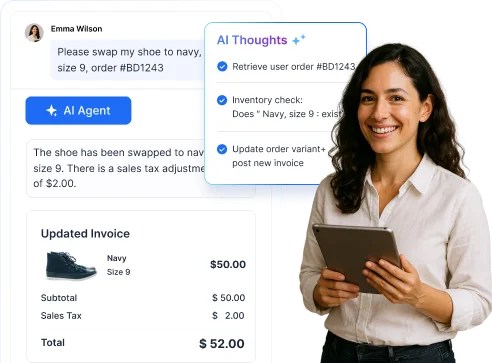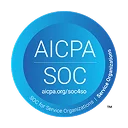Success in the fast-paced and competitive business world is not only rooted in the volume of knowledge possessed, but also in the ability to capture, document, and effectively utilize that knowledge.
At the center of this lies explicit knowledge, which can be captured and stored to serve as the foundation of learning, growth, and innovation in an organization.
Imagine a situation where every important detail in your business is not only documented, but also made readily available and accessible to everyone.
Explicit knowledge has the potential to enable businesses to invest in and purposefully utilize their intellectual capital.
As Benjamin Franklin once said, “An investment in knowledge always pays the best interest.”
In this article, we are going to learn about explicit knowledge, discuss its benefits, differentiate it from tacit knowledge, and learn strategic steps to capture and utilize the knowledge. Let’s begin.
What is explicit knowledge?
Explicit knowledge refers to knowledge that can be captured, written down, and transferred to other people. This form of knowledge can be documented in writing, graphics, or through various audio-visual formats.
The documented information is stored in company databases or knowledge base in different forms such as:
- Books
- User manuals
- Standard operating procedures (SOPs)
- Documents
- FAQs
Businesses can use explicit knowledge to effectively identify potential customers and develop strategies to ensure their long-term success. This type of knowledge is easy to understand, which often encourages team members to collaborate and share knowledge within the organization.
Explicit vs tacit knowledge
There are several types of knowledge, each of them with valuable contributions to businesses for better customer engagement. It is important to understand and know how each can be used differently for better knowledge management and company growth.
Tacit knowledge is based on individual experiences, know-how, and intuition, making it difficult to express or store.
Explicit knowledge on the other hand is easy to share, capture, and document, making it objective. It is well structured and addresses logical topics to enhance learning.
The following table illustrates a summarized version of the differences between explicit and tacit knowledge.
| Explicit knowledge | Tacit knowledge |
|---|---|
| Can be easily captured and shared | Difficult to share and capture |
| Well-structured and highly objective | Has no structure and is subjective |
| Easily expressed, making it easy to understand | Difficult to understand because it cannot be expressed easily |
| Can be stored in books, reports, manuals, SOPs | Cannot be stored because it is based on personal know-how and experience |
| Focuses on a specific topic of concern | Comes from random topics based on personal experience |
Benefits of explicit knowledge
Rooted in documentation, explicit knowledge comprises facts, guidelines, and policies. To understand the value of explicit knowledge, here are some of the benefits:
- Enhanced decision making: Using recorded evidence and data that is easily accessible in the form of explicit knowledge, it becomes easier to make justified choices.
- Clear communication: With easier access to information, explicit knowledge makes knowledge transfer seamless among employees.
- Preserved knowledge: Explicit knowledge creates a repository of information that can be accessed at any time. Important company concepts about products and services can be shared and effectively utilized within the business.
- Optimized operations: Information will always be available using explicit knowledge, even when an employee leaves. Additionally, it improves customer support operations because of the ease of information access.
- Enhanced onboarding: Explicit knowledge ensures the availability of documented materials and resources for new hires. This makes training new employees streamlined and effective.
- Encourages innovation: Having explicit knowledge readily available ensures employees come up with insightful ideas and innovations.
Flexible methods to transfer knowledge
Each type of knowledge comes with unique characteristics. This poses challenges in how each can be transferred. The following are flexible methods that can be used to transfer knowledge.
Explicit-tacit
Explicit to tacit is a type of knowledge transfer where a person learns a concept or skill from documented material and incorporates it into their daily experience. It is used when searching for new skills. A perfect example is watching a YouTube video to learn how to use or install a product.
Explicit-explicit
Explicit to explicit is knowledge transfer that involves the use of existing information to create a new form of documented knowledge. It occurs after collecting information from different sources of explicit knowledge to form one new source of information.
Assembling research findings to create a conclusive report is a form of explicit-to-explicit knowledge transfer.

Tacit-explicit
Tacit-explicit knowledge transfer is when a person documents the knowledge gained from their experiences. In simple terms, it is known as externalization.
Examples include:
- Writing an autobiography
- Drafting an article
- Product reviews
- Writing a journal
Tacit-tacit
Tacit to tacit is an exchange of knowledge between people. Allowing people to learn and use knowledge internally is known as tacit-tacit knowledge transfer. Information is absorbed and internalized without the need to keep records.
Examples include:
- Informal team meetings
- Customer onboarding
- Group discussions
- General conversations
Strategic steps to manage and utilize knowledge
Explicit knowledge is easy to document, meaning it can be captured and easily managed for future reference. Here are some of the ways to effectively manage and utilize explicit knowledge:

Set goals for transferring and capturing knowledge
The standardized goals you set will provide direction and determine the focus point of your explicit knowledge management strategies.
To set effective targets, emphasize both long- and short-term needs for your business. Tailor them to specifically identify and address areas where knowledge is likely to be lost.
Additionally, ensure that they align with your employees’ interests, leading to productivity in the workplace.
The primary purpose of setting these objectives is to ensure that your business uniquely stands out in the long term. Furthermore, they will validate the types of information required to improve team productivity in workplaces.
Conduct audits regularly
Conduct a thorough review and assessment of all your documentation to ensure it is simple to understand, accurate and up to date.
Carefully analyze all reviews and reports to identify the most helpful information that can be included in the documentation. This helps estimate the amount of information to be included within the documentation and the proper format to be used.
Additionally, audit the content regularly to remove any outdated information and replace it with the latest updates, increasing accuracy and making documents more effective.

Discover and capture knowledge
A successful knowledge management process requires a quality tool to effectively capture and manage knowledge. This can be achieved using knowledge management systems.
The following are common functions of a quality, user-friendly tool:
- Centrally manage all your company’s knowledge.
- Allow contributors to have access to the knowledge management system.
- Allow collaboration among members, including knowledge-sharing options.
- Design templates for every topic for consistency.
Identify existing knowledge gaps
Conduct a thorough review of your documentation to identify possible areas with outdated information. The outdated information can either be deleted or updated to meet the latest documentation standards.
Regularly incorporating these changes into your documentation prevents loss of knowledge and resolves the problems caused by knowledge gaps.
Constantly seek insights from your employees to identify the types of information they prefer to be included in the documentation as well as processes that are vital for the company’s knowledge base.
Create and design templates for each topic
Following a similar structure and format for every topic during documentation leads to consistency, which makes documents easy to read and understand.
Your reader will always know the right place to find specific information, making the document more engaging.
Furthermore, using guidelines makes it possible to scale your documentation based on the volume of information to be included. A template essentially simplifies the entire process of documentation, making it clearer and highly efficient.
Applying templates in your documentation also avoids confusion that may arise when different formats and structures are used.
Collect feedback using analytics
Outstanding knowledge management software (KMS) must come with an analytics tool. Keeping your company’s knowledge organized and accessible makes it easier to track and measure the performance of your business.
Insight from the analytics tool will be used to make informed decisions on areas requiring improvement. Some of the common insights you can gain from the analytics tools include:
- High-performing and underperforming areas in your knowledge management
- Most valuable content
- Most searched terms
- Most popular content
- Number of failed searches
Incentivize your team members
Your team members have valuable insights that can be used to make overall improvements in your documentation through explicit knowledge.
Providing them with incentives makes them more active and involved, thus increasing their chances of sharing knowledge.
Shared insights provide accurate information to be included in your documentation. This helps you rely less on knowledge management systems in your operations.
Here are areas that can gain from the information shared across your cross-functional team members:
- Areas within your team requiring improvement.
- Tracking the performance of your knowledge management systems.
Explicit knowledge examples
Learning about different examples of explicit knowledge, whether for personal or business reasons, can sometimes be confusing. Here are some examples of explicit knowledge you will come across often:
Standard operating procedures (SOPs)
A document with step-by-step instructions guiding workers on how to conduct routine operations.
The instructions reduce errors made by employees, promoting a safe and secure work environment.
In addition, SOPs have to be in line with the company’s regulations and standards for consistency.
Employee handbooks
A handbook is a compilation of explicit knowledge outlining company policies, work-related expectations, guidelines, and procedures for employees.
It is a crucial document that promotes consistency in organizations by clearly explaining and guiding employees on the policies and what is expected.
Code of conduct
Employers have a set of ethical and moral behaviors they expect from their employees. A document containing the guidelines for these work-related activities is referred to as a code of conduct.
This document is crucial because it promotes a positive work culture with integrity, accountability, and high working standards among employees.
Operations manual
Also referred to as a user manual, it provides detailed step-by-step instructions on how to use an application or product.
The manual provides a comprehensive guide to users, minimizing the chances of errors and increasing productivity.
Workplace reports
Companies utilize reports to share important data and insight with employees in a unified manner.
These reports can be used either internally or externally and are usually created to address different topics. Some of the information that can be obtained includes:
- Market trends
- Customer behavior
- Competition
Optimize information sharing using explicit knowledge
Any form of knowledge is important, and in a company, it is key to remaining competitive and successful. The cycle of learning does not stop, regardless of the setup.
Explicit knowledge makes learning accessible and enhances collaboration among team members, leading to improved productivity.
To successfully utilize this knowledge, there must be a strong and highly effective knowledge management system. Insights gained will be used to set goals and sustainable strategies leading to positive performance due to the proper utilization of explicit knowledge.
Explore the knowledge management features of BoldDesk that can help you effectively utilize explicit knowledge. Try our 15-day free trial to test the practical experience of our features in action.
Alternatively, book a live demo or contact our support team to learn more about our features.
Leave a comment to let us know what you think about this blog. Thank you.
Related articles



















 Email Ticketing System
Email Ticketing System Shared Inbox Software
Shared Inbox Software Multi Brand Help Desk
Multi Brand Help Desk Internal Help Desk Software
Internal Help Desk Software Trouble Ticketing Software
Trouble Ticketing Software Mobile Help Desk
Mobile Help Desk 















